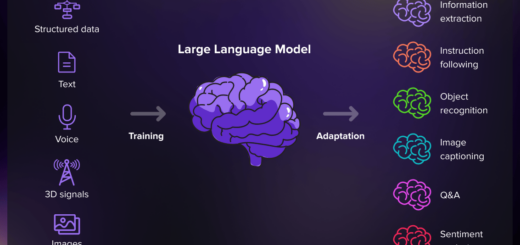AI-Powered Chatbots Take a Leap Forward in Realism

A casual conversation with an AI used to be an unmistakable experience. Responses were often robotic, generic, and, at times, frustratingly irrelevant. While AI-powered chatbots had been evolving steadily for years, a major shift occurred in August 2022 when Meta released its latest conversational AI model, BlenderBot 3, a chatbot designed to engage in more natural, informative, and context-aware conversations than ever before.
Unlike previous iterations, this chatbot could access and retrieve real-world knowledge from the internet, remember past interactions, and adapt its tone based on user engagement. While this was an exciting leap forward, it also raised new challenges related to misinformation, bias, and AI safety, making it one of the most talked-about AI developments of the summer.
What Made This Development Different?
AI chatbots had already been used in customer service, virtual assistants, and social interactions, but they still had critical weaknesses:
- They struggled with long-term memory, often failing to recall past parts of a conversation.
- Their knowledge was static, meaning they couldn’t access real-time information.
- They frequently produced nonsensical or repetitive responses, making interactions unnatural.
Meta’s BlenderBot 3 aimed to fix these shortcomings by introducing three major upgrades:
- Real-Time Information Retrieval – The chatbot could search the internet for the latest data, meaning it wasn’t limited to pre-trained knowledge.
- Long-Term Conversational Memory – Unlike past models, it could remember user preferences, facts, and previous exchanges, leading to more natural dialogues.
- User Feedback Adaptation – It learned which responses were useful or inaccurate by collecting user input and fine-tuning future interactions accordingly.
These advancements pushed AI closer to human-like conversation, but they also introduced new risks and ethical concerns.
How AI-Powered Conversational Systems Were Being Used
By August 2022, chatbots like BlenderBot 3 were being tested in various real-world applications, demonstrating how AI-driven conversations were evolving beyond simple customer service interactions.
1. AI in Personalized Digital Assistance
- Users could ask AI for personalized recommendations, such as movie suggestions, restaurant choices, or fitness plans.
- Chatbots could remember preferences over multiple interactions, making each conversation more relevant over time.
- AI-powered language tutors began offering real-time grammar corrections and conversation practice, assisting language learners worldwide.
2. AI in Market Research and Business Insights
- Companies started using chatbot-powered surveys that could adjust their questions based on user responses, collecting more relevant consumer insights.
- AI-driven assistants began analyzing business trends, news, and competitor movements, providing real-time strategic recommendations.
3. AI in Healthcare and Mental Wellness
- Conversational AI was integrated into mental health chatbots, offering users support and guidance for anxiety, stress, and emotional well-being.
- Medical chatbots were deployed for preliminary symptom analysis, directing users to appropriate healthcare professionals based on their reported symptoms.
The range of use cases suggested that conversational AI was on the verge of transforming digital interaction across multiple industries.
The Controversy: Risks and Ethical Challenges
While BlenderBot 3 and similar AI models were advancing rapidly, they weren’t without their problems. Almost immediately after release, users started noticing several flaws and risks in these conversational AI systems.
1. AI Hallucination and Misinformation
- Since BlenderBot 3 pulled real-time information from the internet, it occasionally provided false or misleading facts.
- Without proper fact-checking mechanisms, AI could inadvertently spread conspiracy theories or unreliable sources as truth.
2. Bias and Unfiltered Responses
- Despite safety measures, some users prompted the AI into making offensive or controversial statements, exposing weaknesses in content moderation and ethical training.
- The chatbot sometimes reflected biases present in its training data, raising concerns about fairness and inclusivity.
3. Privacy and Data Security Risks
- The AI’s ability to remember previous conversations raised questions about how much personal data was being stored and used.
- Users were concerned that long-term memory features could pose privacy risks if not properly secured.
These challenges underscored the delicate balance between advancing AI capabilities and ensuring responsible, ethical deployment.
The Future of Conversational AI
As August 2022 came to a close, it was evident that conversational AI was still a work in progress, but its trajectory pointed toward even greater advancements in the near future. Key developments on the horizon included:
- Improved AI fact-checking – AI models integrating real-time verification systems to ensure responses are accurate and unbiased.
- More customizable AI personalities – Chatbots capable of adjusting their tone and response style to match individual user preferences.
- Integration into the Metaverse – AI-driven avatars that would interact with users in virtual reality environments, creating a more immersive digital experience.
- Multi-modal AI assistants – Combining voice recognition, text-based interaction, and visual processing, allowing AI to engage in richer, more dynamic conversations.
The next generation of AI chatbots wouldn’t just be answering questions—they would be engaging, assisting, and even entertaining users in ways that felt increasingly natural.
Final Thoughts: AI Chatbots Reach a New Level of Complexity
The launch of BlenderBot 3 in August 2022 was a pivotal moment in the evolution of conversational AI. With its internet-connected knowledge base, long-term memory, and real-time learning capabilities, it represented a significant step toward AI-driven assistants that could hold realistic, informative, and even personalized discussions.
However, with greater intelligence comes greater responsibility. The rise of AI-powered chatbots also highlighted ongoing challenges in misinformation, bias, and user privacy, all of which would need to be addressed for these systems to reach their full potential.
Conversational AI was no longer a futuristic concept—it was actively shaping how humans interacted with technology, and its impact was only beginning to unfold.




